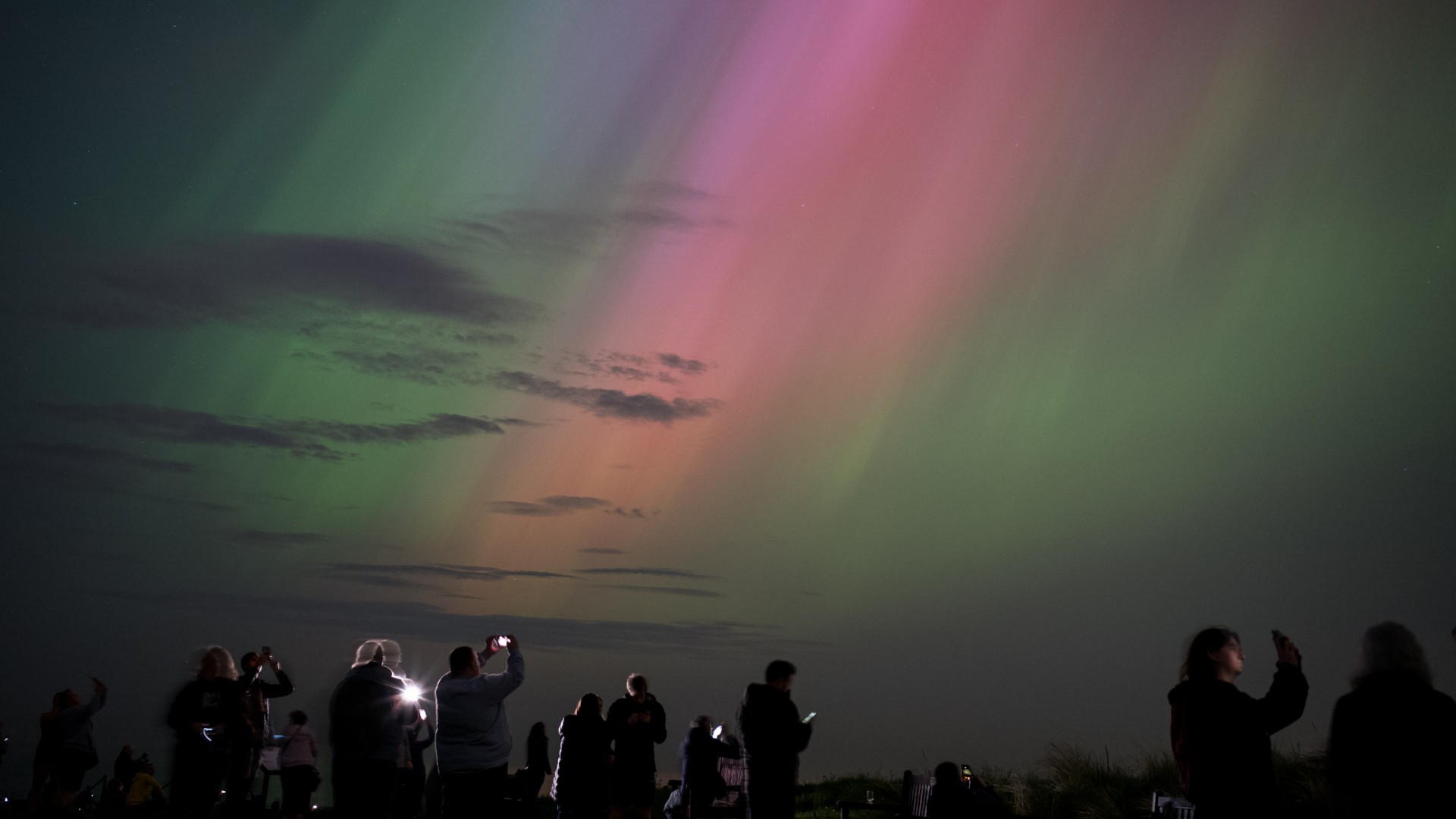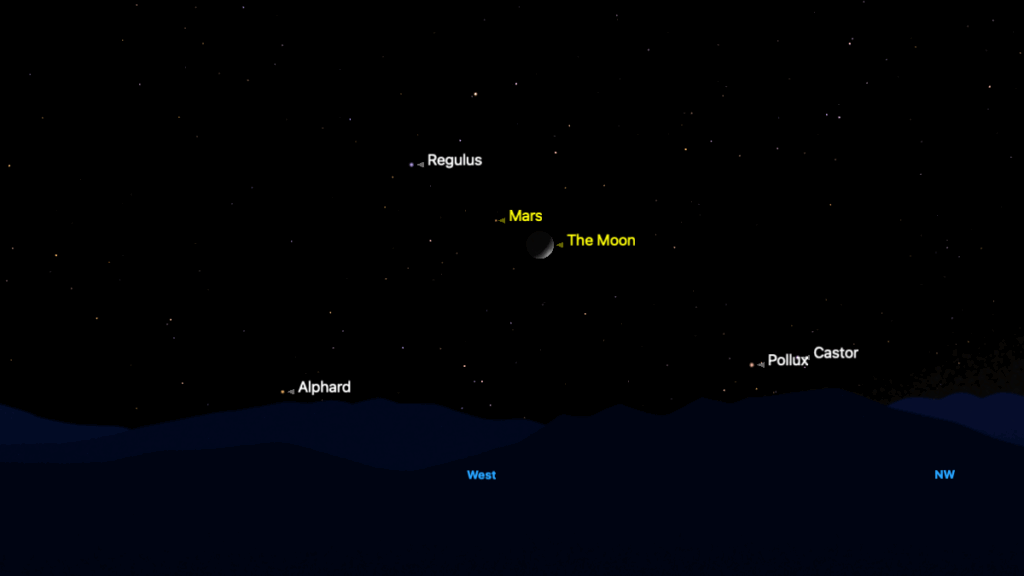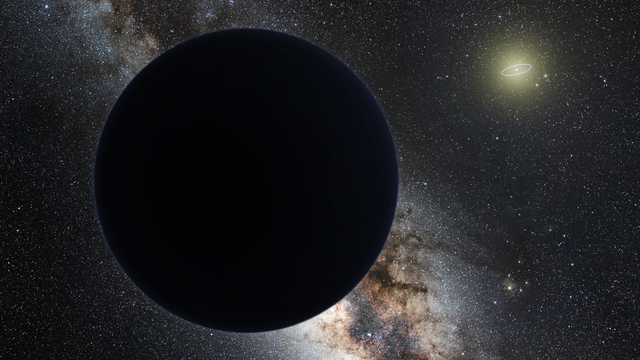I’ll never forget the night of May 10, 2024. I remember having dinner with a friend and talking about the potential of seeing the northern lights in Northeast Ohio, a conversation that I had never had before or even thought was possible. It sounded unlikely, but earlier that week, the possibility was brought to my attention when I wrote one of my first-ever stories highlighting space weather triggered by the sun.
As a meteorologist, space weather wasn’t something I talked about often, but the more I was learning that week, the more I became fascinated with how powerful solar flares from sunspot clusters almost 93 million miles (149.60 million kilometers) away could impact us here on Earth. When the National Oceanic and Atmospheric Administration’s Space Weather Prediction Center (SWPC) issued a geomagnetic storm watch for a pretty powerful solar event on Mother’s Day Weekend and I was asked to report on it, I had no idea I would be writing about a geomagnetic storm that would make history.
The May 2024 solar storm, also known as the Gannon storm or Mother’s Day solar storm, is now ranked by NOAA as one of the most memorable solar events in history, and potentially the most powerful documented this century. It included a parade of powerful solar flares between May 8-11, 2024, originating from a beastly sunspot group that measured 17 times wider than Earth’s diameter. According to NOAA, during this time frame, there were at least eight coronal mass ejections (CMEs), which are giant blasts made up of magnetic field and plasma, that targeted Earth. This resulted in the creation of extreme geomagnetic storm (G5) conditions, the highest on NOAA’s space weather scale.
“The Gannon storm was a spectacular event in the sense that so many people got to see the aurora, especially those living in areas that don’t typically see it,” Mike Cook, Space Weather Lead at MITRE Corporation, told Space.com. “But, beyond that, it was a reminder that our sun is capable of producing these very disruptive events that can impact our critical infrastructure.”
While photos of the northern lights around the world lit up social media and news headlines, it also brought attention to the impacts a storm of this magnitude can have on our planet and human civilization. Scientists and forecasters at NOAA’s SWPC were credited with providing ample time with early warnings ahead of the solar storm, allowing end users such as power grid operators to take the precautions needed to prevent a potentially crippling electric disaster.
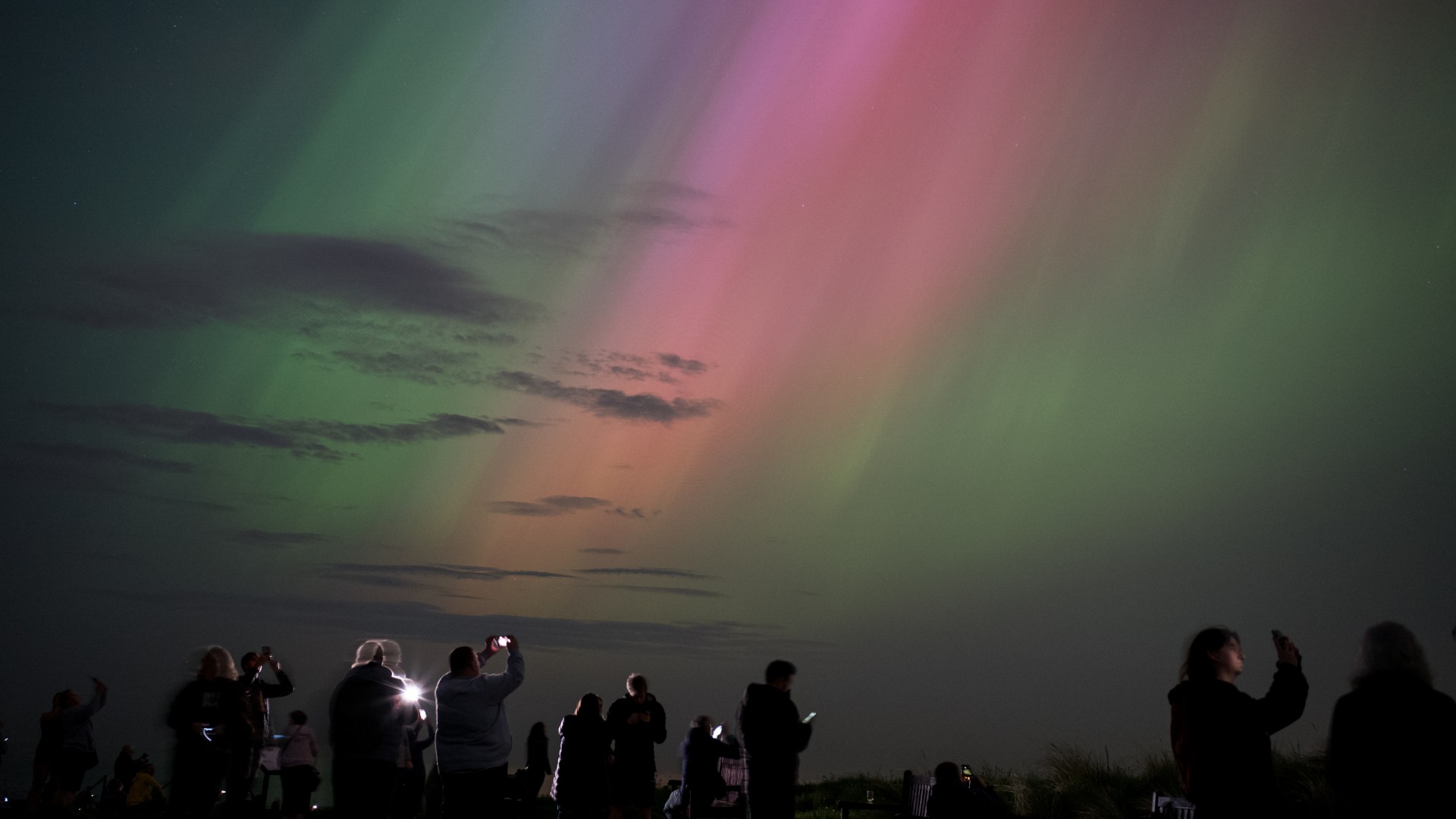
“At SWPC, we continue to work to help operators protect our critical infrastructure from such storms,” Clinton Wallace, director of NOAA’s SWPC, told Space.com. “More than ten years of planning and preparation paid off. Thanks to early warnings and strong teamwork, the people who run critical systems like power, farming, and satellites were able to prevent most of the damage from the May 2024 storm. This proves that being ready isn’t just helpful, it’s essential.”
However, as with hurricanes and severe weather events, impacts can still be felt even when we are as prepared as possible.
Tamitha Skov, a retired research scientist from the Aerospace Corporation and a space weather professor at Millersville University in Pennsylvania, told Space.com that while there were a lot of positive impacts from the event, there were also some not-so-good surprises. While there was a win in terms of how resilient the North American power grid was in the face of the storm, the agriculture industry took a hit as vulnerabilities with GPS systems that help guide tractors were exposed when the solar storm reached Earth.
“The fact that we had no major cascading failures of the grid is an indicator that we have successfully hardened our grid better than in years past. Especially, since we use far more electricity now and have integrated green energy technologies, being able to operate through the storm was a real success for that industry,” Skov said.
“We have known about GNSS vulnerability for decades; however, it is now so integrated into precision farming equipment and practices that a loss of quality signal from satellites can cause an entire agriculture industry to halt for the duration of the storm. A few days outage might not seem to be a big deal, but when the storm hits during planting or harvest season, as big storms typically do (storm effects are enhanced at the equinoxes), then the impact to the crop yield can be extremely significant.”
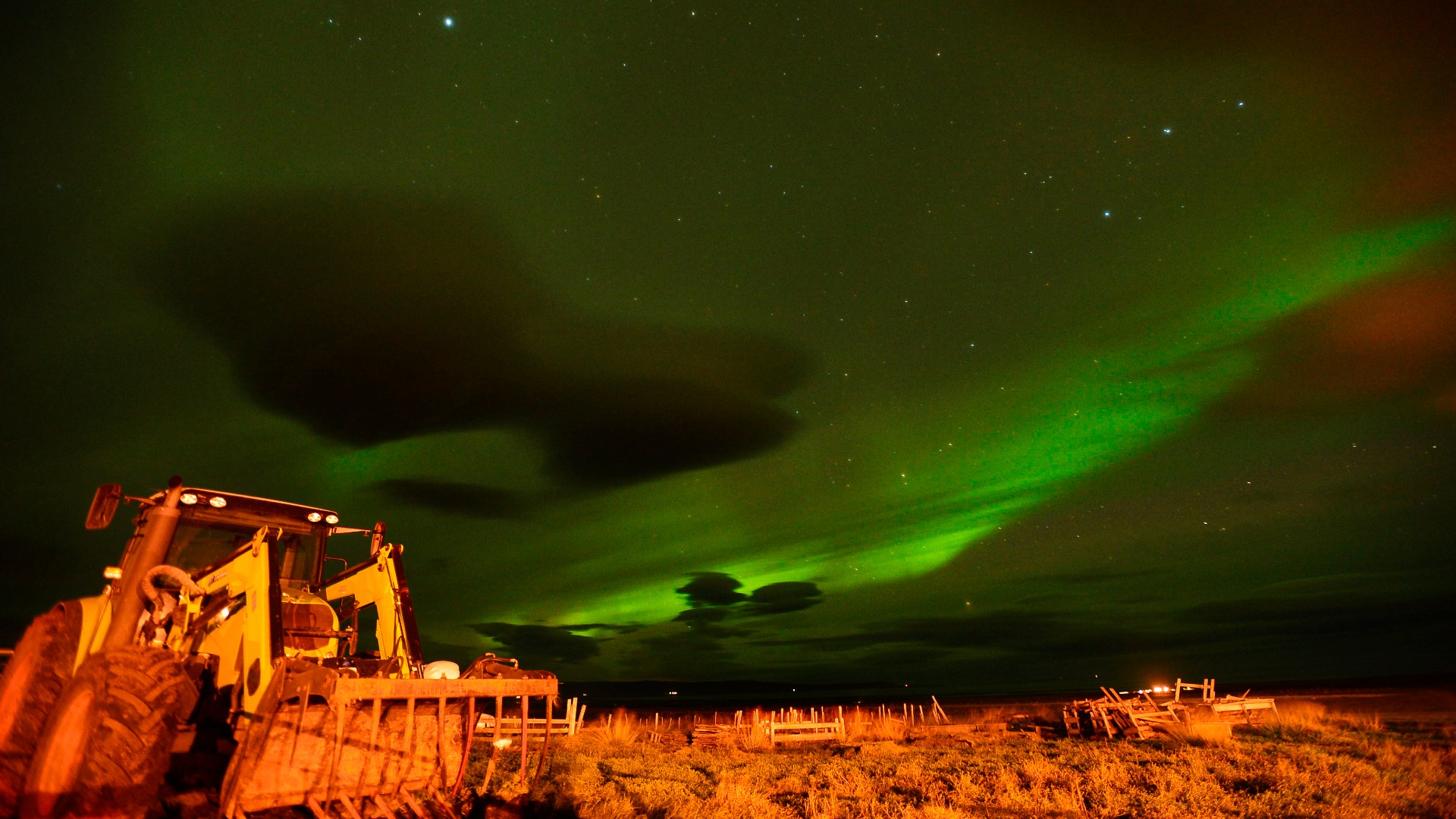
The Gannon storm certainly increased the chatter over the last year about space weather, evident in the flurry of social media posts and news articles that continuously surface when there’s the potential for a geomagnetic storm to occur. Aurora chasers continue to get just as excited as storm chasers when there’s a possibility for a show by Mother Nature, and scientists say this has created a great opportunity to educate the public on space weather.
“So many people got to view the aurora that normally wouldn’t, and they’re asking questions about why does this happen? Why did it look different? Why can I see it with my phone and not my eyes? Why is this red here and green there?” Kelly Korreck, a program scientist at NASA Headquarters, told Space.com “All of these questions and all this curiosity, we just love to share the NASA science on all of that and really help explain what’s going on, so that we understand where we live and the technology that we live with too.”
While there has been an abundance of knowledge and new data obtained from the Gannon Storm, scientists say there’s still so much more to discover. Although storms as powerful as this one are not a frequent occurrence, with the possibility of more in the future (and perhaps someday even more extreme than this one), the more we can learn about how it affects our daily lives, including our economy, remains a high priority.
RELATED STORIES:
“Even though the grid successfully avoided a failure of such magnitude, it did show that the general public should understand that a power blackout could occur with future storms of this or stronger magnitude,” Shawn Dahl, NOAA’s SWPC Service Coordinator told Space.com.
“Press and media are becoming more knowledgeable, and emergency management authorities are increasingly planning for space weather storms. This is a very good thing and helps prepare our nation’s resilience.”
